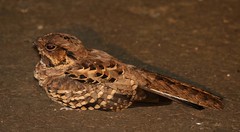
Scientific name: Streptopelia turtur
Family: columbidea.
Length: 11,2 inchs.
Habitat: forests, farmland, parks and urban gardens.
Distribution: Almost all of Europe, east of central Asia, south to north Africa.
ID: Small, blond, red over mottled with dark gray head, chest and belly pinkish white. Dark flight feathers, white-black stain on both sides of the neck.
Small size, the turtle dove common in the past was much more common but their population has declined sharply in recent years and is now an endangered species in some places go during the summer, as the Iberian Peninsula. Among the possible causes of its decline are changes linked to agriculture, hunting and the pressure of an invasive species, the Turkish turtledove, whose populations appear to have prospered during the last decades at the expense of it.
The Dove hibernate common in North Africa and on their way back to Europe, while the males begin the stops in flight as a wedding claims, with characteristic lullabies, posados in trees and hedges.
The nest, built with sticks and fragile appearance, is situated on the lower branches of trees or on top of a fence. Both parents incubate the eggs and hatchlings are born to two weeks in the making and develop plumage at three weeks of life.








































_(0421)_-_Relic38.jpg)










